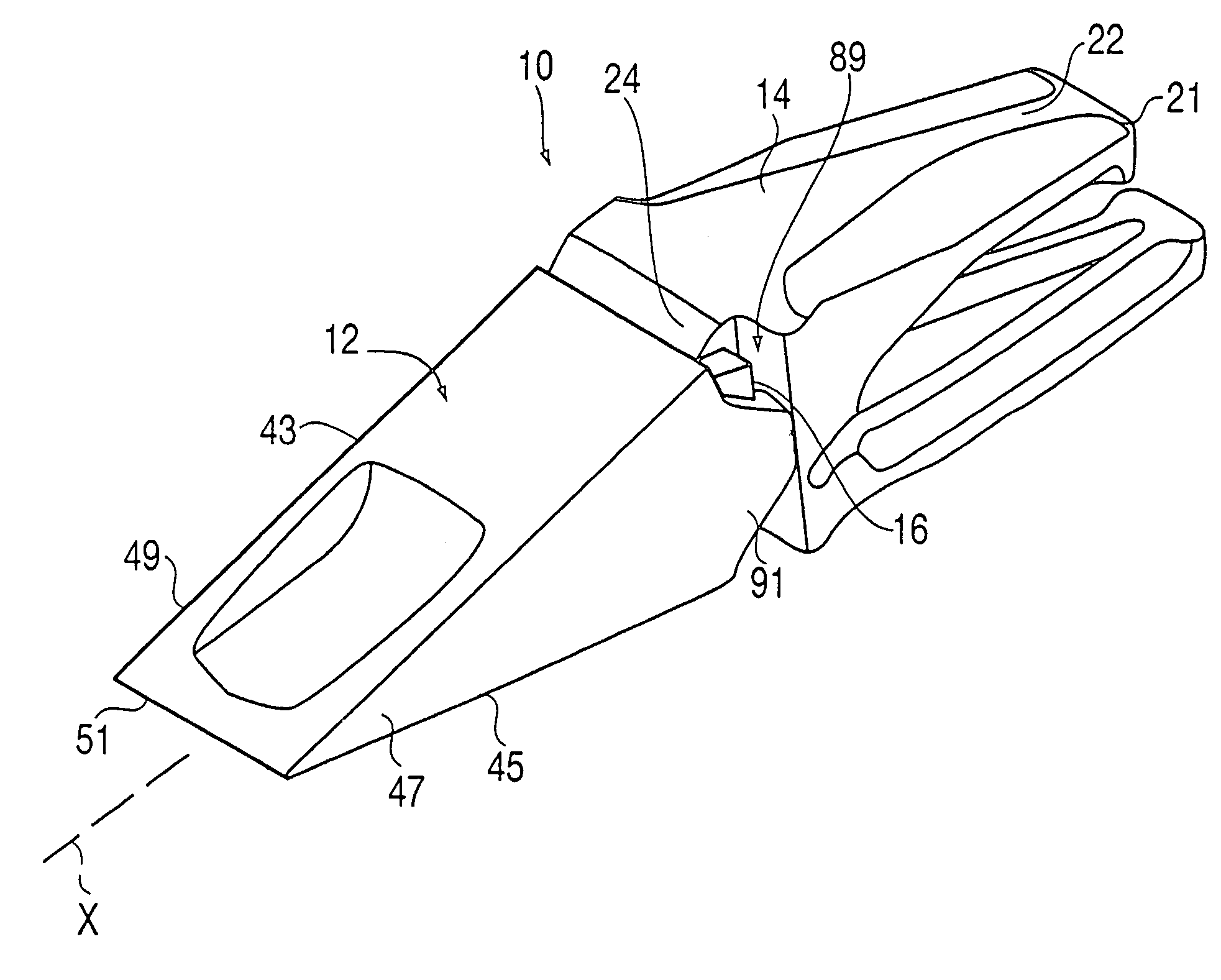Point and adapter assembly
a technology of adapter and wear parts, applied in the field of wear parts, can solve the problems of ejection of the member, exacerbate the difficulty of resisting high ejection force, wear parts are subjected to high abrasion conditions, etc., and achieve the effect of reducing frictional force, reducing wear, and improving resistance to ejection
- Summary
- Abstract
- Description
- Claims
- Application Information
AI Technical Summary
Benefits of technology
Problems solved by technology
Method used
Image
Examples
Embodiment Construction
[0050]The present invention is directed to a wear assembly for protecting a wear surface. In particular, the wear assembly is especially adapted for use in excavating, mining, construction and the like. The wear assembly is well suited for use in forming an excavating tooth system, but could also be used to form other wear members.
[0051]For purposes of illustration, the present application describes the inventive construction as an excavating tooth system. The production of other wear parts (e.g., a shroud) would utilize the same nose and socket constructions, but could have different working and mounting ends. For the sake of description only, terms such as upper, lower, vertical, etc. are used in this specification and are to be understood as pertaining to the tooth system as oriented in FIG. 1. The use of these terms is not an indication that these particular orientations are required for the wear assembly. The wear assembly could be oriented differently than as illustrated in FI...
PUM
 Login to View More
Login to View More Abstract
Description
Claims
Application Information
 Login to View More
Login to View More - R&D
- Intellectual Property
- Life Sciences
- Materials
- Tech Scout
- Unparalleled Data Quality
- Higher Quality Content
- 60% Fewer Hallucinations
Browse by: Latest US Patents, China's latest patents, Technical Efficacy Thesaurus, Application Domain, Technology Topic, Popular Technical Reports.
© 2025 PatSnap. All rights reserved.Legal|Privacy policy|Modern Slavery Act Transparency Statement|Sitemap|About US| Contact US: help@patsnap.com



